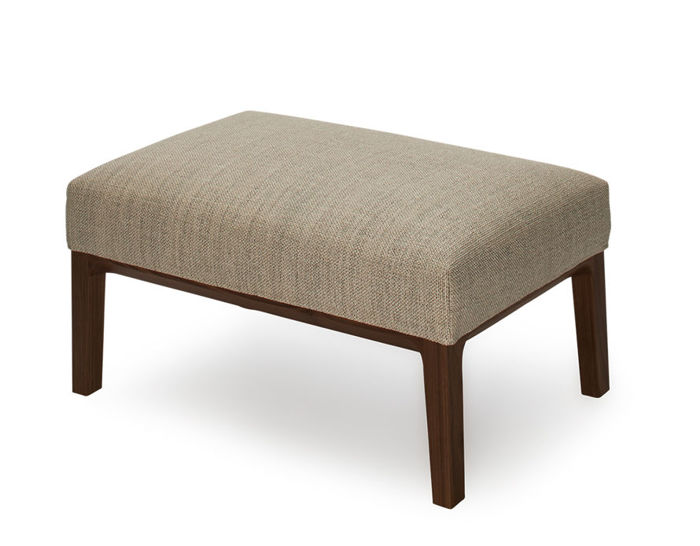miles footstool
by Niels Bendtsen from Linteloo
miles footstool
Design Niels Bendtsen, 2014
Metal frame, rubber belts, polyurethane, wood base
Made in Italy by Linteloo
"I always strive to make a comfortable seat that will fit in all interiors. I didn't want a chair that says "look at me", but one that feels like it's always been there. My creative process generally consists of me sitting at my table sketching while listening to jazz. I wanted to make a chair that was reminiscent of Miles Davis: timeless but fresh, simple but well constructed.This is the spirit of the Miles chair." - Niels Bendtsen
Miles Footstool features a metal frame with seat made of woven rubber belts and the base is covered in polyurethane foam. The seat cushion is standard with polyurethane foam, covered in dacron. The legs can be specified in American walnut or anthracite. Upholstered in your choice of fabric (removable) or leather (not removable) upholstery.
miles footstool: 28.3" w | 18.5" d | 14.5" h
Metal frame, rubber belts, polyurethane, wood base
Made in Italy by Linteloo
"I always strive to make a comfortable seat that will fit in all interiors. I didn't want a chair that says "look at me", but one that feels like it's always been there. My creative process generally consists of me sitting at my table sketching while listening to jazz. I wanted to make a chair that was reminiscent of Miles Davis: timeless but fresh, simple but well constructed.This is the spirit of the Miles chair." - Niels Bendtsen
Miles Footstool features a metal frame with seat made of woven rubber belts and the base is covered in polyurethane foam. The seat cushion is standard with polyurethane foam, covered in dacron. The legs can be specified in American walnut or anthracite. Upholstered in your choice of fabric (removable) or leather (not removable) upholstery.
miles footstool: 28.3" w | 18.5" d | 14.5" h
Niels Bendtsen
Bendtsen gained valuable skills and a respect for hand-built traditions as an apprentice, and was intrigued by new technologies. Between 1963 and 1972, Bendtsen had his own retail store where he sold imported Scandinavian designs. He designed small items for the store, but it wasn't until he was in his early thirties that he truly began designing furniture.
Linteloo started a brand that radiates "enjoying the good life" in every possible way. Raised by parents who owned a furniture store in The Netherlands, he had noticed the domination of minimalism in the early nineties. British and Italian design gurus were promoting an anonimous, almost sterile interior style in which practically anything personal should be hidden in cupboards, and anything "comfortable" was expelled to the bedroom.







 write a review now
write a review now
